I’ve been closely following the rollout of the European Union’s new entry/exit system, as I have five Schengen area entries or exits coming between its launch on Oct. 12 and the end of 2025. I’d seen several articles noting three-hour immigration lines on arrival to some European airports since the Oct. 12 launch, but generally got the impression that the rollout was going smoothly and that departure immigration usually wasn’t experiencing significant lines.
Still, I wanted to stay informed, so in the days leading up to my Oct. 20 flight from Brussels to Toronto, I checked the Brussels Airport (BRU) website and social media and searched for recent news articles or press releases regarding the entry/exit system’s rollout. I found no notable information or reports, so I figured the system’s implementation was going smoothly, or perhaps hadn’t started. After all, some entry/exit points opted for a partial or delayed rollout.
Unfortunately, I faced a significant wait time for exit immigration in Brussels — so much so that I almost missed my transatlantic flight. And although quicker, the queue upon arrival back in Brussels was still longer than usual. Here are my experiences and tips if you plan to visit the EU with a non-EU passport in the coming months as more airports begin implementing the new system.
My experience with exit immigration in Brussels
I had a 9:40 a.m. flight from Brussels to Toronto on Oct. 20. From where I was staying, I could take a train one stop to the airport every 30 minutes. So, I decided on a train departure that would arrive at the airport 110 minutes ahead of my flight. Considering I hadn’t read any negative reports about the departure immigration at BRU, I figured this would give me enough time to weather any slightly longer than usual immigration lines and visit the lounge before boarding.
However, the train I’d planned to take was canceled at the last minute, and Google Maps indicated driving would take just about as long as waiting for the next train. Even with the cancelled train, I arrived at the airport 80 minutes before departure and reached the immigration queue 62 minutes before departure.
Only EU passport holders could use the self-serve immigration kiosks when I was departing from Brussels. I only note this because TPG’s Eric Rosen, who is a U.S. citizen, was able to use such a kiosk on Oct. 13 when departing from Amsterdam. But when I departed from Brussels a week later, all non-EU passport holders were being processed by just two police agents (a third agent started processing travelers as I neared the front of the queue).
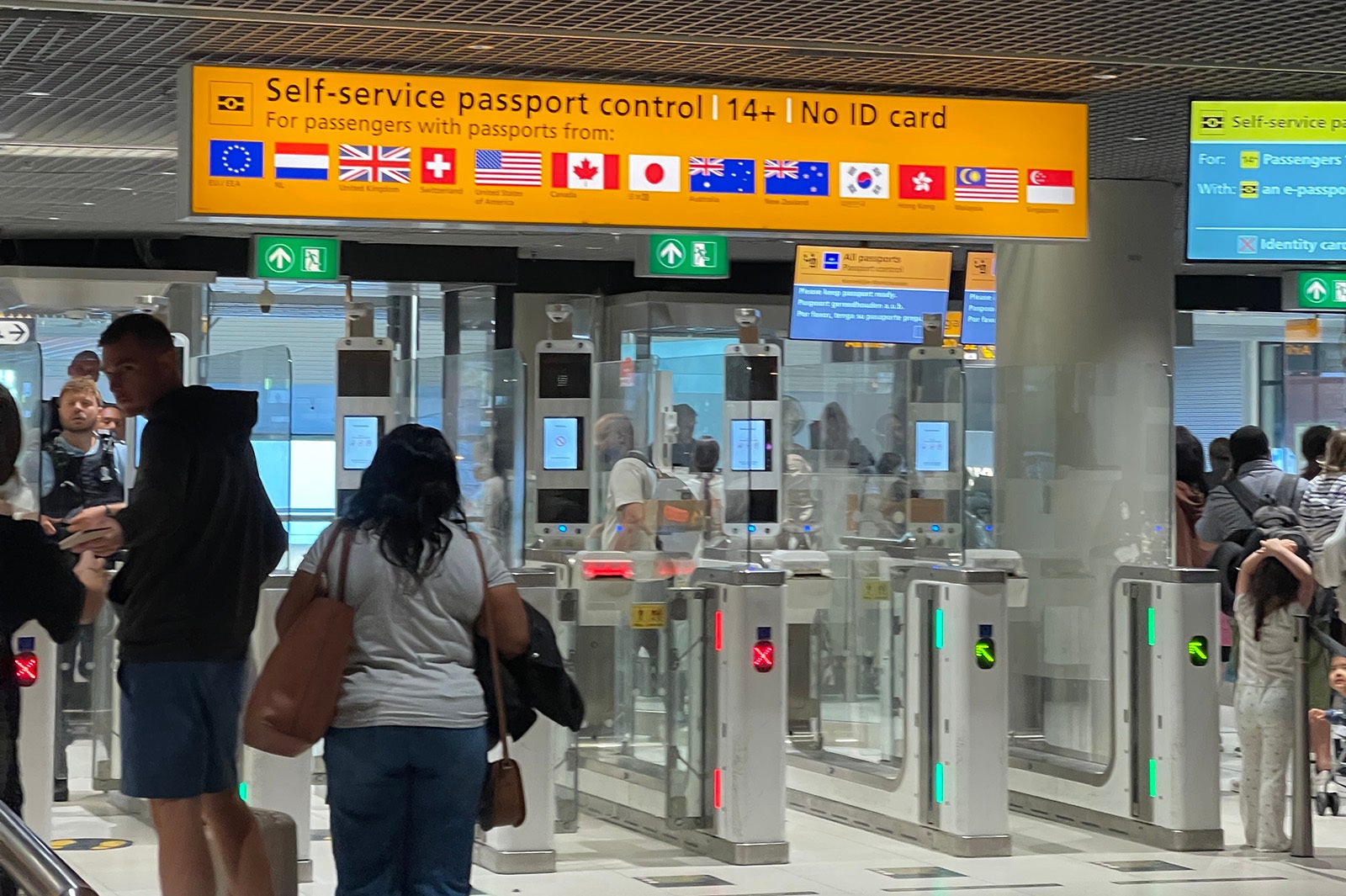
As the line moved slowly, I nervously compared my progress against the time that had elapsed and began to get a sinking feeling: I wouldn’t make my flight.
Airport representatives in the immigration area told passengers concerned that they’d miss their flight that the airlines would hold planes for passengers stuck in immigration. I suspected this wouldn’t be the case, but luckily, a kind passenger near the front of the line told me to go in front of him.
When I reached the police agent for immigration, he didn’t ask any questions, collect any biometric data, or even flip through my passport. Instead, he said the computer was working well for my passport and stamped my passport. Whatever the computer was doing took about five times as long as it usually does when entering or exiting the Schengen area.

Reward your inbox with the TPG Daily newsletter
Join over 700,000 readers for breaking news, in-depth guides and exclusive deals from TPG’s experts
Once I cleared the immigration booth, I ran to my gate. When I scanned my boarding pass, it gave an error, and the gate agent noted that the check-in agent marked me as a late check-in. This surprised me since the check-in agent didn’t tell me this, and I had checked in well ahead of Air Canada’s stated bag drop deadline. Luckily, the gate agent could still load me and my checked bag onto the flight.
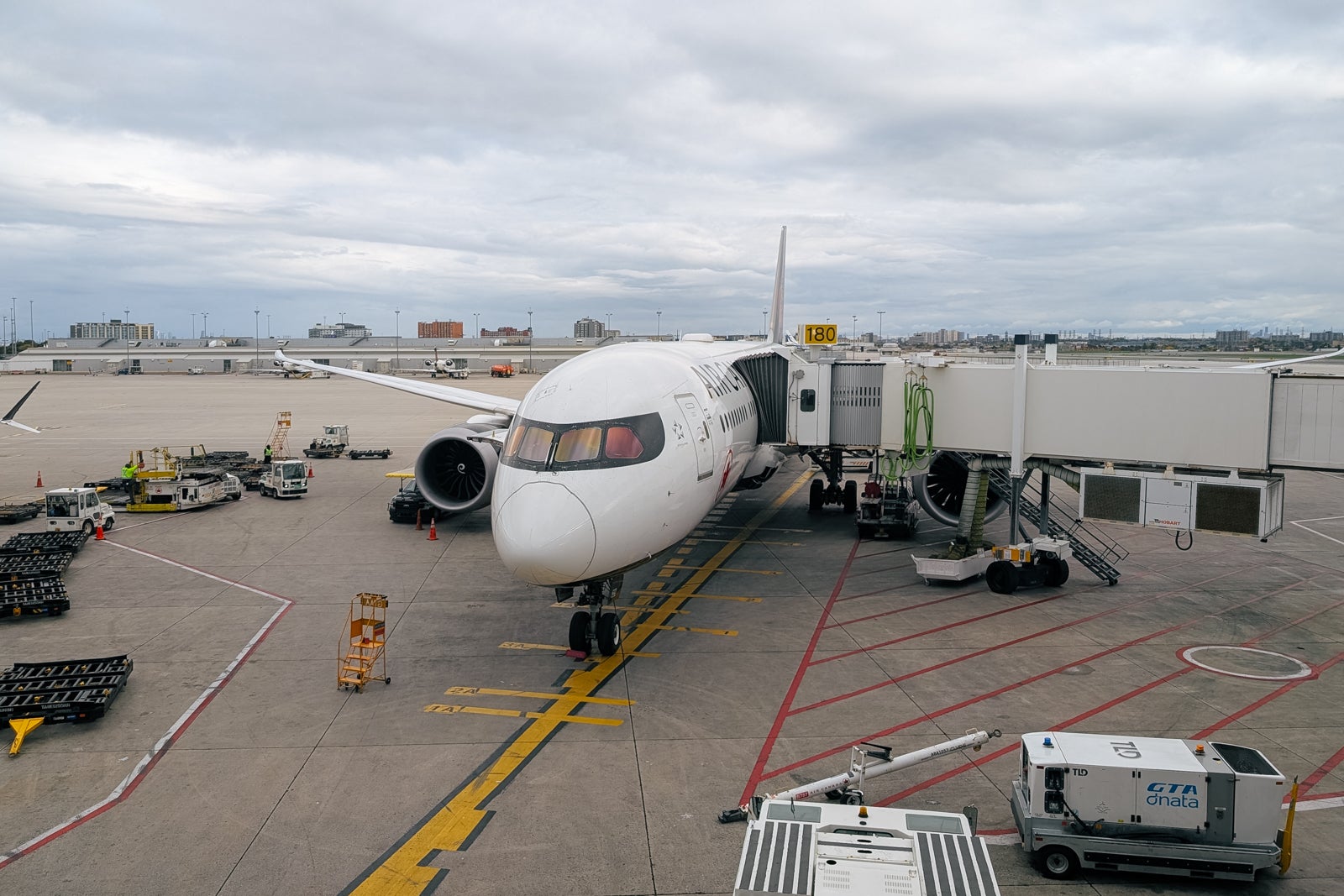
Based on the minimal number of passengers who boarded after me, and the boarding complete call just a few minutes after I boarded, I was one of the final passengers to make the flight. As I suspected, Air Canada didn’t wait for passengers stuck in immigration; a flight attendant told me 25 passengers missed the flight, including four in the premium economy cabin.
Related: The ultimate guide to river cruises in Europe
My experience with arrival immigration in Brussels
On my way back to the EU, I took a London-to-Brussels flight midday on Oct. 24. After my experience with the immigration queue leaving Brussels a few days prior, I was prepared for a long arrival immigration wait. I chose a seat near the front of my British Airways flight to Brussels and moved swiftly from the plane to the immigration processing center after deplaning.
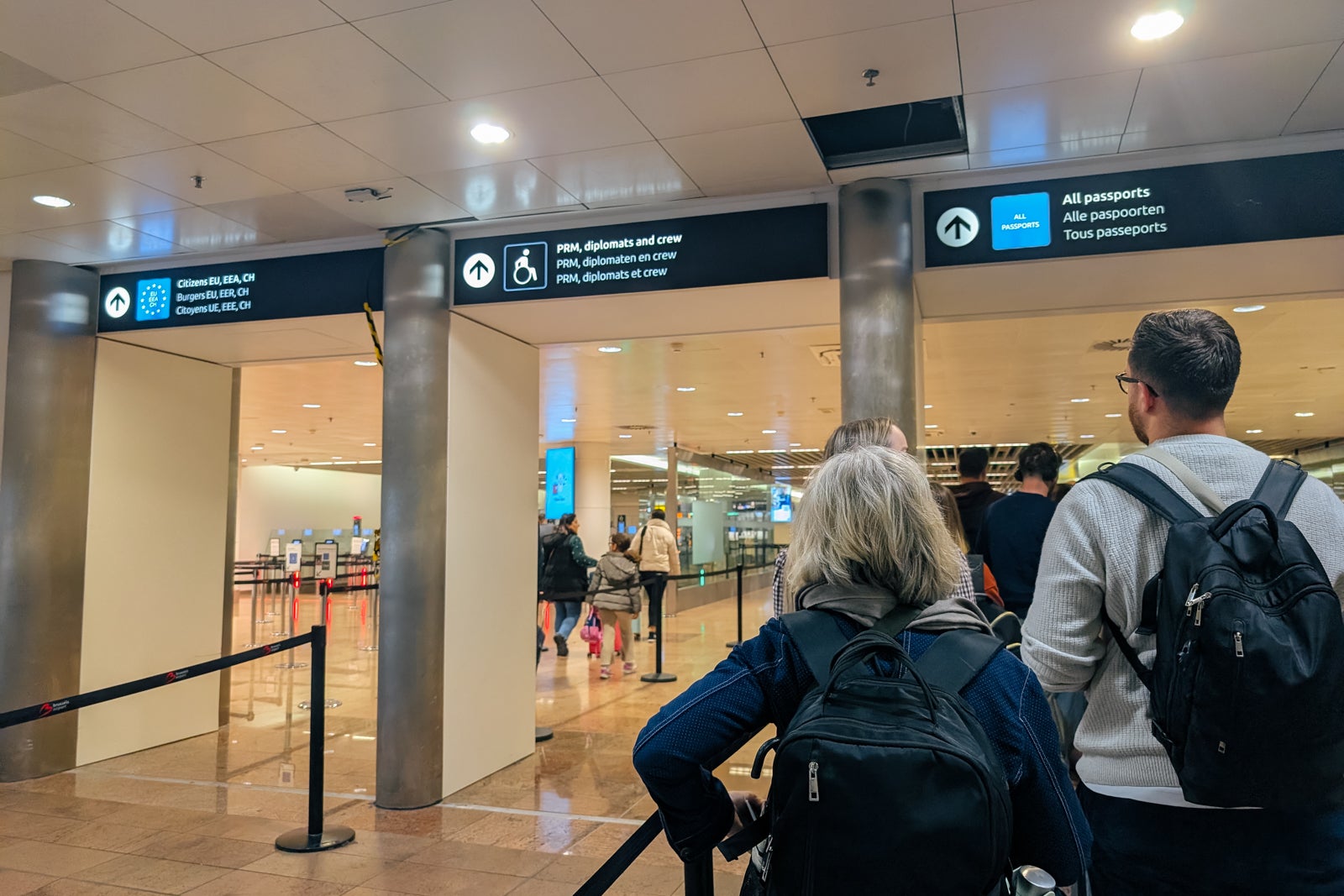
The arrival area featured 12 self-service immigration kiosks, but only EU passport holders could use these kiosks. Nine booths were staffed with immigration agents on my arrival, but two were reserved for EU passport holders who couldn’t use the self-service kiosks, and five were reserved for travelers who needed a visa.
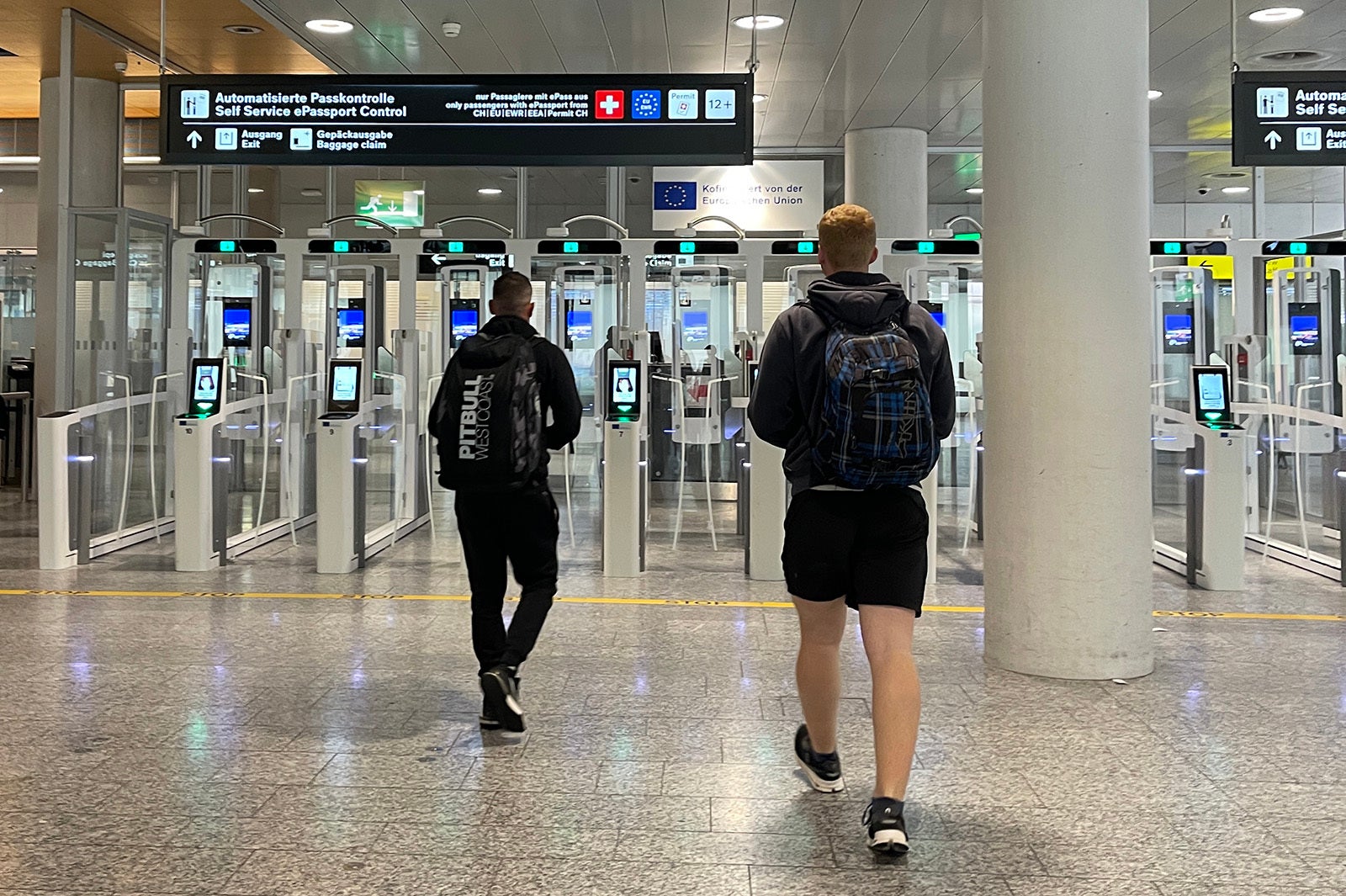
This left just two kiosks for non-EU passport holders who didn’t need a visa, so the queue was long and slow-moving. Even though I believe I was the first person in the queue from my flight, it still took me 40 minutes to clear immigration. The line got significantly longer as I was in it, as passengers from my flight and seemingly a few others joined the crowd.
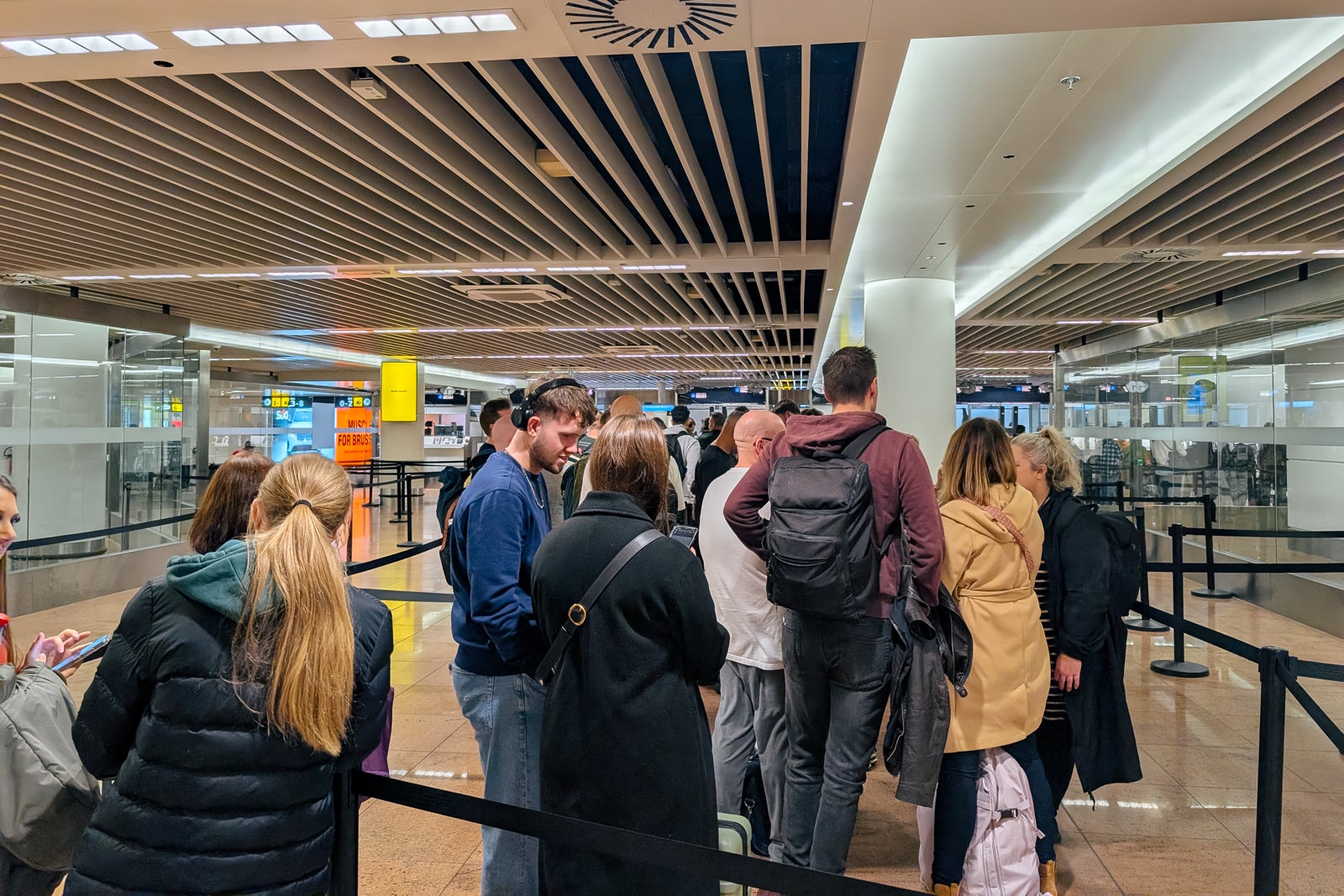
As on my departure a few days earlier, the immigration agents weren’t collecting biometric data or asking questions. Instead, the agents seemed to just be using the new computer system and stamping passports. As before, the agent barely flipped through my passport before stamping a page and waving me through.
Related: 12 European destinations that are best experienced in the fall
Lessons learned and advice
The 29 countries using the new entry/exit system have until April 10 to fully integrate the system. So, you never quite know what you might get when you enter or exit one of these countries between Oct. 12 and April 10. You might get the pre-Oct. 12 system and experience, you might get the full biometric data collection and questions experience, or you might face something in between.
As such, it’s impossible to know how long the wait will be before your departure or after your arrival. For this reason, don’t make my mistake. Instead, leave yourself plenty of time when arriving in or departing from one of the 29 participating countries. Then … well, find a lounge to visit once you clear immigration.
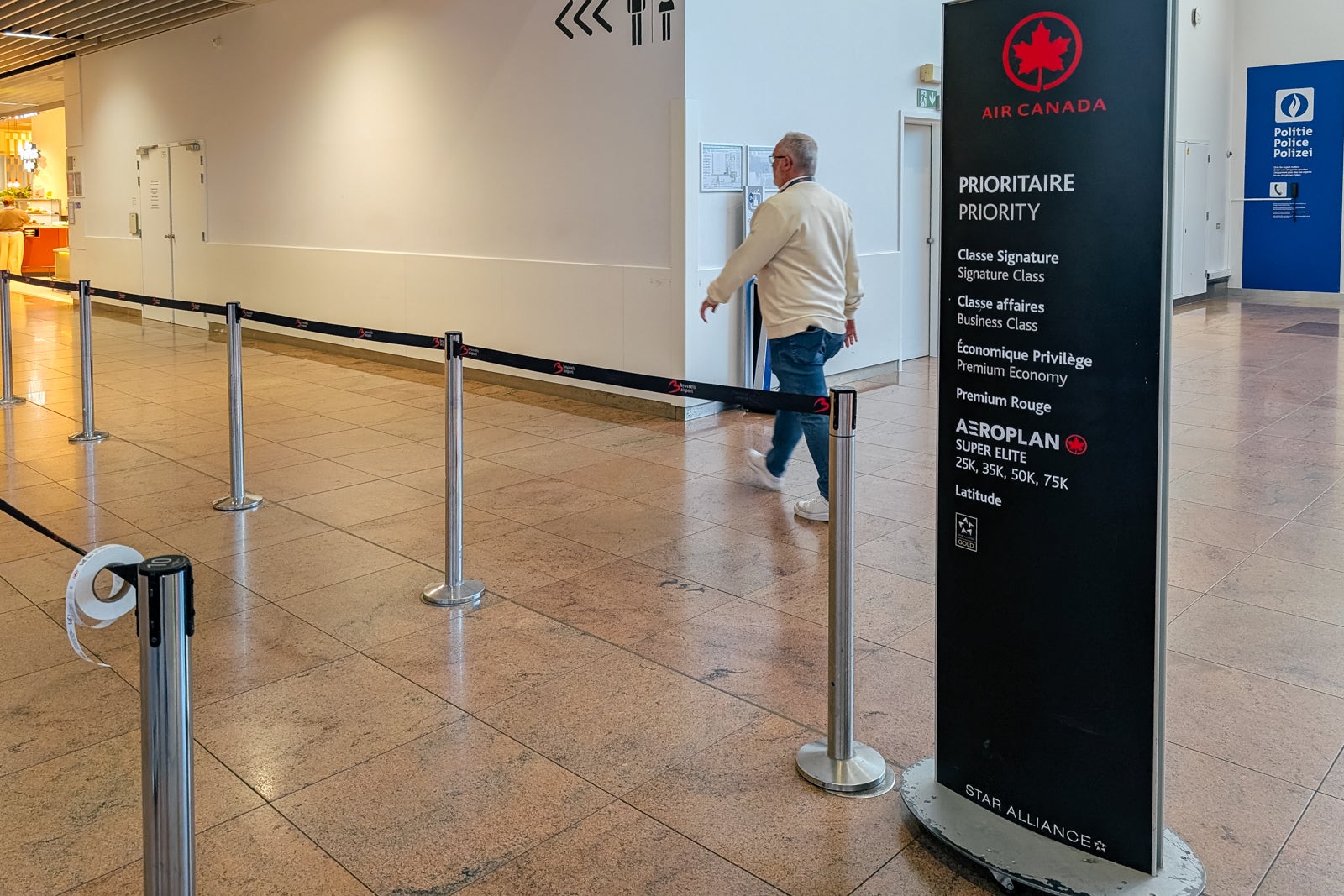
Likewise, give yourself plenty of time after you arrive to clear immigration. After clearing immigration and customs, I needed to take a once-per-hour train from Brussels Airport to Rotterdam, in the Netherlands. I could have saved money by purchasing a ticket for a specific train in advance, but I opted for a more expensive flexible ticket that would let me take any train that day because I couldn’t predict how long I’d need to wait in immigration queues.
However, it’s worth checking your entry/exit point’s social media and website to see whether they have any updates or useful information regarding the entry/exit system. For example, the Amsterdam airport website notes it isn’t implementing the entry/exit system until Nov. 3. Lucky me, as I’m departing from Amsterdam on Nov. 6.
Likewise, check whether there’s anything you can do to speed up the immigration process. For example, if you’re entering or exiting Sweden, consider downloading the Travel to Europe mobile app. Hopefully, more countries will begin using this app to collect data, and I expect it will unlock some shorter queues for travelers who opt to use it.

If you’re on a short connection on a single ticket, the airline may protect you if you miss your connection due to long transfer immigration lines. However, I’d recommend booking connections of at least four hours if you are entering or leaving any of the 29 European countries using the new entry/exit system during your layover, to save yourself the hassle of changes and rebooking should you encounter a long queue.
If possible, you may want to hold off on visiting the 29 countries altogether until they smooth out their system. Many countries collect biometric data and passport scans on arrival and departure — including Canada, Singapore and Australia — but the lines are minimal. I expect, given some time, the EU entry/exit system process will speed up.
Of course, you may not want or be able to avoid visiting the Schengen area anytime soon. For example, several events will take me back to Europe this fall and spring. So, if you must go, just give yourself plenty of time.
Related: Travel to Europe using points and miles: How to redeem your rewards for flights
Bottom line
Bad luck with a cancelled train and underestimating how long the exit immigration would take in Brussels almost led to me missing a transatlantic flight. This would have been an expensive mistake, as I likely would have needed to buy a new ticket since it would have been my fault (not the airline’s) that I missed the flight.
So be prepared for immigration to take much longer than you expect while the Schengen zone countries work out the bugs in their systems. And — especially if you’re on a wide-body plane — consider selecting a seat near the front of the plane so you can be one of the first passengers on your flight to reach the immigration checkpoint.
Related reading:
